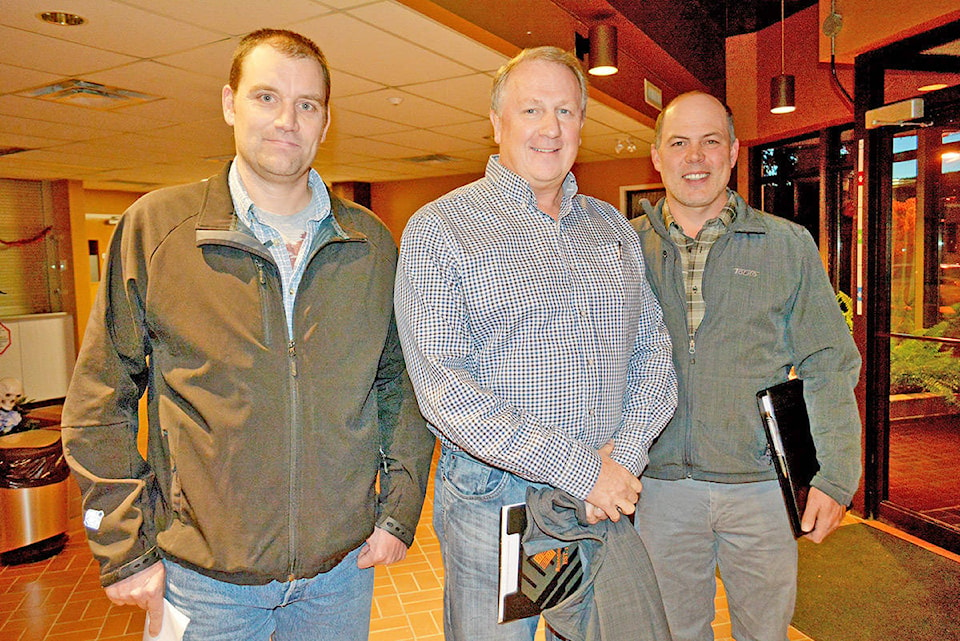Williams Lake city council has endorsed Tolko Industries Ltd.’s request that the provincial government adopt policies that would make harvesting and extraction of fire-damaged timber economically viable.
Council agreed to write a letter of support for the request after Tolko representatives made a presentation during a regular council meeting last Tuesday.
“The Province needs to look at a stumpage rate that is commercially viable and recognize the added costs companies are going to face in order to process the fire-damaged timber,” Tolko manager of external and stakeholder relations Tom Hoffman told council. “In order for us to get cutting permits approved we have to have the stumpage rate determined. We don’t have any approved cutting permits approved right now.”
In the Quesnel and Williams Lake area about 46 million cubic metres of timber and another nine million cubic metres in the 100 Mile House area were impacted by the wildfires, Hoffman said.
“We get a percentage of the cut in each of those areas,” he explained. “For the long-term 12 million cubic metres of Tolko’s future harvest has been affected.”
Responding Thursday to an interview request about Tolko’s request, a Ministry of Forests spokesperson stated in an e-mail the salvage of burnt timber is a priority and the ministry expects to see salvage start imminently, and continue through the fall and winter, noting already some timber that has been cut down in the creation of fireguards has been milled.
As for stumpage rates, the ministry said it has established fair pricing for the burnt timber, to cover a range of circumstances and severity of the damage, which will vary from stand to stand.
The ministry said salvage of burnt timber is only one part of a broader recovery plan from the wildfires which is being developed in partnership with forest licenses, First Nations and communities. Areas are also being prioritized for reforestation and wildlife habitat restoration.”
Tolko’s woodlands manager of forestry Kevin Sytsma told council the company does have experience processing burnt timber.
“After the 2010 fires we harvested and processed it for several years, taking volumes off the Chilcotin military training area,” Sytsma.
“It is challenging given the wood does deteriorate quickly. There is opportunity in the Douglas-fir for a couple of years but in the pine and spruce there is a very limited shelf life in a lot of those stands because they are not as fire-resistant.”
Sytsma said Tolko is “keen” to start its salvage operations immediately and has been planning and working with First Nations and the provincial government around some of the obstacles.
“There is good progress being made working with the Province, but there’s urgency in that the sooner they can put the policy in place the sooner we can begin our salvage operations,” Sytsma said. “Hopefully it can be put in place within weeks, not months.”
Tolko’s regional manager Randy Chadney said Soda Creek and Lakeview are both up and running at full production after the summer’s wildfires, but log inventories are still tight.
“We are running at four-day’s inventory at Soda Creek and Lakeview’s in better shape with nine-day’s inventory.”
Chadney said it is important for the company to increase its inventory back up to historical levels before breakup in the spring.
Harvesting fire-damaged timber will be a big adjustment for the company, Chadney said.
In the past, the mountain pine beetle wood was combustible and dust was an issue, whereas processing fire-damaged fir will be a whole different challenge, he said.
“We ran a 30-log trial and you could not even see inside the debarker.”
Lakeview is looking at replacing its head rig and carriage to handle the larger logs and Soda Creek is planning on investing on equipment to handle the moisture in the fir, which wasn’t a case with pine.
“There is a commitment to spend $5 million in the fourth quarter and the first quarter of next year,” Chadney said. “It shows that Tolko is still heavily invested in this region.”
